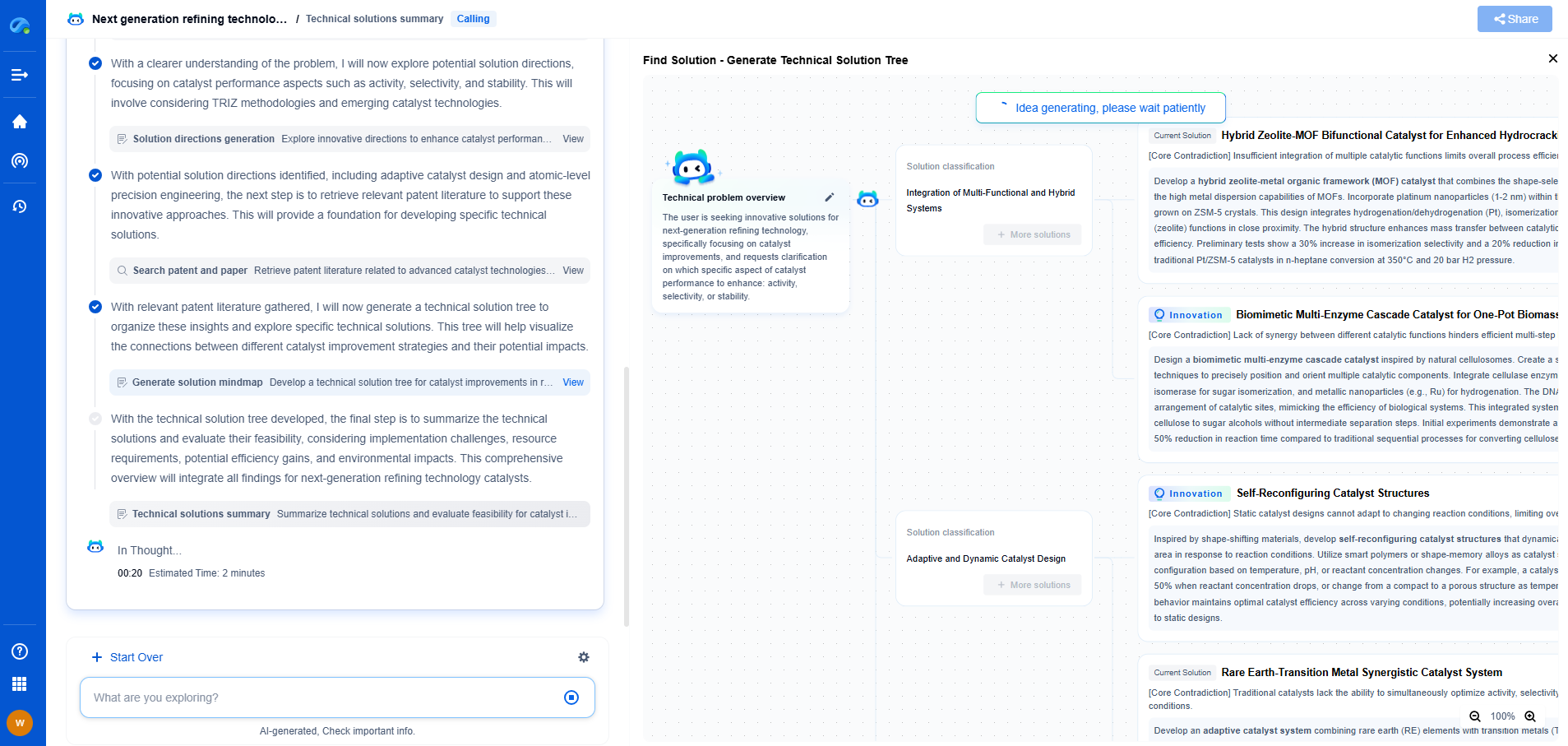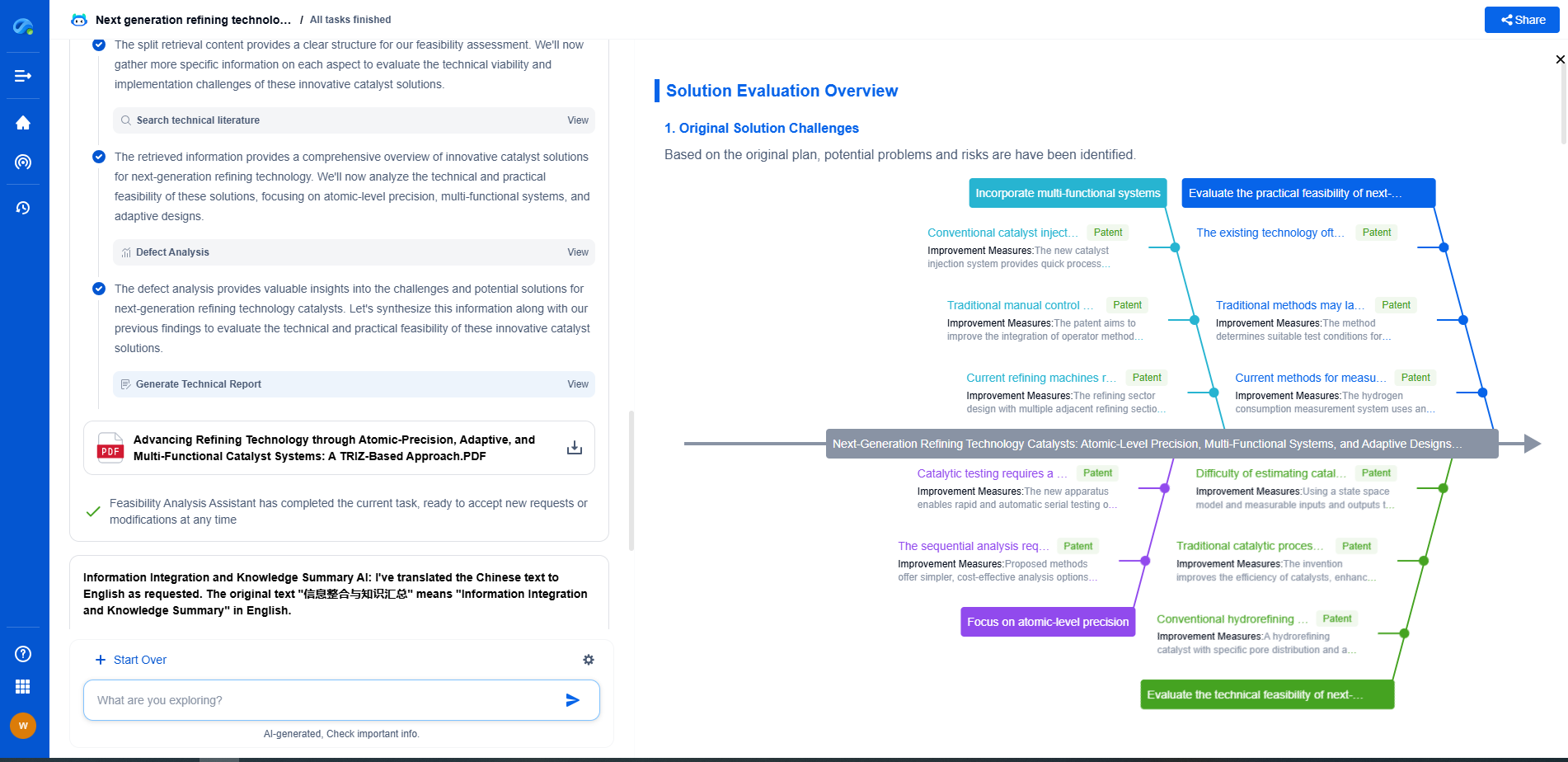Ferroresonant vs Double-Conversion UPS: Voltage Regulation Accuracy
JUN 26, 2025 |
In the world of uninterruptible power supplies (UPS), different technologies offer unique advantages and trade-offs. Two popular types of UPS systems are Ferroresonant and Double-Conversion. Understanding the key differences between these technologies, particularly in terms of voltage regulation accuracy, can help businesses and individuals choose the right system for their needs.
Understanding Ferroresonant UPS
Ferroresonant UPS systems, also known as constant voltage transformers, have been a reliable option for decades. These systems operate by using a ferroresonant transformer to regulate voltage. The transformer provides a stable output by compensating for voltage fluctuations in the input power. This is achieved through magnetic resonance, which naturally corrects voltage variations, resulting in a steady and constant voltage output.
Advantages of Ferroresonant UPS
One of the main advantages of Ferroresonant UPS systems is their ability to handle voltage sags and surges without needing batteries. This capability makes them highly reliable and low-maintenance. Additionally, they offer inherent short-circuit protection and noise filtering, contributing to the protection of sensitive equipment. Ferroresonant systems are particularly well-suited for environments with frequent voltage fluctuations, such as industrial settings or regions with unstable power grids.
Limitations of Ferroresonant UPS
Despite their reliability, Ferroresonant UPS systems have limitations. Their voltage regulation accuracy is typically within ±3% to ±5%. While this is acceptable for many applications, it may not be sufficient for highly sensitive electronic devices that require more precise voltage regulation. Furthermore, Ferroresonant units tend to be larger and heavier than their modern counterparts, which can be a consideration in installations with space constraints.
Introducing Double-Conversion UPS
Double-Conversion UPS systems, also known as online UPS, represent a more modern approach to power protection. These systems continuously convert incoming AC power into DC power, which charges a battery and powers an inverter. The inverter then converts the DC power back to AC, ensuring a consistent and clean power supply to connected devices. This continuous conversion process provides an effective barrier against power disturbances.
Advantages of Double-Conversion UPS
The primary advantage of Double-Conversion UPS systems is their exceptional voltage regulation accuracy. With a typical accuracy range of ±1% or better, they provide a highly stable voltage output that safeguards even the most sensitive electronic equipment. This precision is crucial for environments such as data centers, hospitals, and laboratories where equipment performance and data integrity are paramount. Additionally, Double-Conversion systems offer seamless switchover to battery power during outages, ensuring uninterrupted operation.
Challenges with Double-Conversion UPS
While Double-Conversion UPS systems offer superior voltage regulation, they come with some challenges. They tend to be more expensive than other UPS types, both in terms of initial investment and ongoing maintenance costs. Additionally, their continuous operation can lead to higher energy consumption and increased heat generation, necessitating adequate cooling solutions. However, the trade-off is often justified for critical applications where superior performance is essential.
Comparing Voltage Regulation Accuracy
When comparing the voltage regulation accuracy of Ferroresonant and Double-Conversion UPS systems, it becomes evident that Double-Conversion systems have the edge. With a tighter regulation range, they provide better protection for sensitive equipment, minimizing the risk of damage or malfunction due to voltage variations. This makes Double-Conversion UPS systems the preferred choice for environments demanding the highest level of power quality and reliability.
Choosing the Right UPS for Your Needs
Selecting between a Ferroresonant and Double-Conversion UPS system ultimately depends on the specific requirements of your application. For environments with moderate power quality concerns and non-critical equipment, a Ferroresonant UPS may offer a cost-effective and low-maintenance solution. However, for mission-critical applications where precision and reliability are non-negotiable, a Double-Conversion UPS is likely the better choice.
Conclusion
Understanding the differences in voltage regulation accuracy between Ferroresonant and Double-Conversion UPS systems is crucial for making an informed decision. While Ferroresonant UPS systems offer reliability and simplicity, Double-Conversion systems provide unmatched voltage precision, making them ideal for protecting sensitive equipment. Carefully assessing your power protection needs will ensure that you choose the right UPS technology for your environment, providing peace of mind and safeguarding your valuable assets.
Stay Ahead in Power Systems Innovation
From intelligent microgrids and energy storage integration to dynamic load balancing and DC-DC converter optimization, the power supply systems domain is rapidly evolving to meet the demands of electrification, decarbonization, and energy resilience.
In such a high-stakes environment, how can your R&D and patent strategy keep up?
Patsnap Eureka, our intelligent AI assistant built for R&D professionals in high-tech sectors, empowers you with real-time expert-level analysis, technology roadmap exploration, and strategic mapping of core patents—all within a seamless, user-friendly interface.
👉 Experience how Patsnap Eureka can supercharge your workflow in power systems R&D and IP analysis. Request a live demo or start your trial today.
- R&D
- Intellectual Property
- Life Sciences
- Materials
- Tech Scout
- Unparalleled Data Quality
- Higher Quality Content
- 60% Fewer Hallucinations
Browse by: Latest US Patents, China's latest patents, Technical Efficacy Thesaurus, Application Domain, Technology Topic, Popular Technical Reports.
© 2025 PatSnap. All rights reserved.Legal|Privacy policy|Modern Slavery Act Transparency Statement|Sitemap|About US| Contact US: help@patsnap.com

